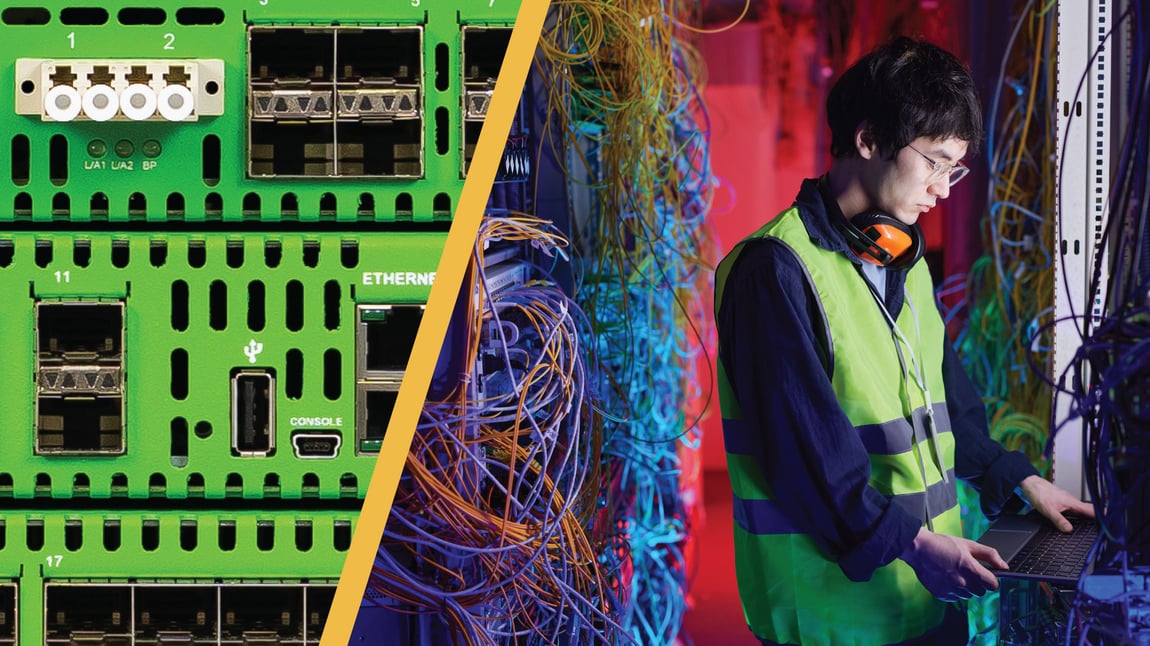
Pluggables and cables in IT and OT networks. They’re a necessity. You wouldn’t drive an automobile without windshield wipers. You can’t fish for large mouth bass without a good monofilament line in that fishing pole. Selecting the right pluggables and cables for your network can be challenging. This blog will explore the importance of pluggables and cables, and guide how to choose the right ones for your network.
Pluggables, or SFP transceivers, plug into network devices and allow devices to communicate with one another via the cables. Cables transmit data between the connected devices such as a Network TAP and a monitoring tool (e.g., APM or SIEM). Choosing the right pluggables and cables can significantly impact the performance and reliability of your network.
Comparing Different Types of Pluggables and Cables
There are hundreds of SFP, SFP+, QSFP+ pluggable transceivers. You need to choose the transceiver based on requirements like network speed, type, media, connector, and bandwidth.
- SFP (Small Form-factor Pluggable) transceivers: SFPs are versatile pluggables that can support a range of network speeds and distances.
- SFP+ (10 Gigabit Small Form-factor Pluggable) transceivers: SFP+s are designed for high-speed networks and can support up to 10Gbps.
- QSFP+ (Quad Small Form-factor Pluggable) transceivers: QSFP+s are designed for even higher speeds, supporting up to 100Gbps.
If you’re considering using fiber, there is an array of choices before you. You’ll have to decide on the mode, the thickness, the wavelengths, and the connectors. There are two modes for fibers: single and multi. Single-mode fiber (SMF) has a smaller core than multimode fiber (MMF). Moreover, SMF’s wavelength is narrower. As a result, SMF has a higher bandwidth capability. It can also transmit data longer distances than MMF.
MMF has its advantages, though. Due to its bigger core and wider wavelengths, it gathers light better than SMF. While MMF isn’t suitable for long distance transmission, it can transport many different kinds of optic signals.
Copper has always and continues to play a vital role in networking and communication systems today. Not only is copper wiring the backbone of many existing enterprise and service provider networks, it is also the foundation of many industrial Ethernet environments.
How to Choose the Right Pluggables and Cables
Here are some factors to consider when selecting pluggables and cables:
- Compatibility: Ensure that the pluggables and cables you select are compatible with your Network TAPs, Network Packet Brokers, and monitoring and security tools. Check the manufacturer's specifications to ensure that the pluggables and cables are designed to work together.
- Speed: Choose pluggables and cables designed for your network's speed. For example, if your network runs at 10Gbps, select pluggables and cables designed for this speed.
- Distance: When selecting cables, consider the distance between your network devices. Choose cables long enough to reach your devices without compromising performance.
- Quality: Invest in high-quality pluggables and cables to ensure optimal performance and reliability. Cheaper options may save you money in the short term, but they can be more prone to failure, resulting in downtime and lost productivity.
- Mandatory Pluggable: Pay attention to devices that require using pluggables from the manufacturer of the network device. This means you must use specific, branded pluggables and your must keep extra on-hand because other vendors’ pluggables will not be compatible.
Upgrading Your Network? Don’t Forget Pluggables and Cables
When upgrading your network, it is crucial to consider the pluggables and cables you are using. Upgrading to faster network speeds, for example, may require upgrading your pluggables and cables. Using outdated pluggables and cables may result in bottlenecks, slower network speeds, and lost productivity. Investing in high-quality pluggables and cables can help future-proof your network and ensure optimal performance.
Best Practices for Installing and Maintaining Pluggables and Cables in Network TAPs
Here are some best practices for installing and maintaining pluggables and cables:
- Handle pluggables and cables with care to avoid damaging them.
- Ensure that pluggables and cables are properly inserted and secured.
- Regularly inspect pluggables and cables for damage or wear and replace them if necessary.
- Clean pluggables and cables regularly to ensure optimal performance.
- Use appropriate tools and techniques when inserting and removing pluggables and cables to avoid bending or damaging the connector pins.
- Label all cables and document their connections to ensure proper identification and troubleshooting in case of issues.
- Avoid using excessive force when connecting or disconnecting cables, as this can damage the cable and the device ports.
Shameless Plug (get it?)
Garland Technology has a wide variety of pluggables and cables. Garland Technology’s Network TAPs and Network Packet Brokers do not require mandatory transceivers. Garland is a Multi-Source Agreement transceivers vendor. Any MSA compliant transceiver works in our products. This gives your flexibility and freedom to choose what works best for your environment.
Looking for the right pluggables and cables for your network? Join us for a brief network Design-IT consultation and demo. No obligation - it's what we love to do!

